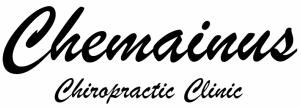Neck Pain
Neck pain is a common and costly problem in Western society. Nearly 60% of the population will experience neck pain at some point in their lives, and at any one time, about 5% of the North American population has sufficient neck pain to cause disability. (See reference 1).
The head is supported by the neck and upper back, and it is these areas that commonly cause neck pain. The top three joints in the neck allow for most movement of your neck and head. The lower joints in the neck and those of the upper back create a supportive structure for your head to sit on.
The head is supported by the neck and upper back, and it is these areas that commonly cause neck pain. The top three joints in the neck allow for most movement of your neck and head. The lower joints in the neck and those of the upper back create a supportive structure for your head to sit on.
What causes neck pain?
The vast majority of neck pain occurrences are the result of benign musculoskeletal problems of the muscles, ligaments or joints. However, the pain can be caused by numerous other spinal or non-spinal problems. Determining the cause and structural source of neck pain is important for determining the appropriate treatment.
How can neck pain be treated?
For many people with neck pain, effective and timely treatment can shorten the recovery time and reduce the likelihood that the pain will come back. There are numerous treatment options available for the management of neck pain, however, no obvious single treatment modality has been shown to be the best. As such, patient preference plays a large role in determining which treatment option is appropriate (See reference 2).
What does the public say? The 2011 Consumer Reports Overview of Alternative Therapies rated chiropractic the most effective treatment for neck pain; more effective than massage or medications.
What does the research say? A 2010 review found that spine manipulation, or mobilization, may provide immediate or short-term improvement in pain and function (See reference 3). Another study found that for people with acute and subacute neck pain, chiropractic adjustments were more effective than medication in both the short and long term (See reference 4).
What does the research say? A 2010 review found that spine manipulation, or mobilization, may provide immediate or short-term improvement in pain and function (See reference 3). Another study found that for people with acute and subacute neck pain, chiropractic adjustments were more effective than medication in both the short and long term (See reference 4).
Other Conservative Therapies
- Rehabilitative exercises and specific activity recommendations – Engaging in physical activity, within the limits of your pain, is critical to a speedy recovery when done correctly. Specific stretching and strengthening, as recommended by your health care provider, can help to restore motion and strength to your neck and can be very helpful in relieving pain and preventing future episodes of neck pain (See reference 5).
- Physical modalities – These therapies can offer short-term pain relief and include laser therapy (See reference 6) and electrical stimulation (See reference 7).
- Acupuncture – Acupuncture can offer significant relief of neck pain (See reference 8).
- Massage Therapy – Massage therapy can offer significant relief of neck pain (See reference 9).
References
- Alexander EP. History, physical examination, and differential diagnosis of neck pain. Phys Med Rehabil Clin N Am. 2011 Aug;22(3):383-93, vii.
- Plastaras CT, Schran S, Kim N, Sorosky S, Darr D, Chen MS, Lansky R. Complementary and alternative treatment for neck pain: chiropractic, acupuncture, TENS, massage, yoga, Tai Chi, and Feldenkrais. Phys Med Rehabil Clin N Am. 2011 Aug;22(3):521-37, ix.
- Gross A, Miller J, D’Sylva J, Burnie SJ, Goldsmith CH, Graham N, et al. Manipulation or mobilisation for neck pain. Cochrane Database Syst Rev. 2010 Jan 20;(1):CD004249.
- Bronfort G, Evans R, Anderson AV, Svendsen KH, Bracha Y, Grimm RH. Spinal manipulation, medication, or home exercise with advice for acute and subacute neck pain: a randomized trial. Ann Intern Med. 2012 Jan 3;156(1 Pt 1):1-10.
- Miller J, Gross A, D’Sylva J, Burnie SJ, Goldsmith CH, Graham N, et al. Manual therapy and exercise for neck pain: A systematic review. Man Ther. 2010 Aug;15(4):334-54.
- Chow RT, Johnson MI, Lopes-Martins RA, Bjordal JM. Efficacy of low-level laser therapy in the management of neck pain: a systematic review and meta-analysis of randomised placebo or active-treatment controlled trials. Lancet. 2009; 374 (9705): 1897-1908.
- Escortell-Mayor E, Riesgo-Fuertes R, Garrido-Elustondo S, Asúnsolo-Del Barco A, et al. Primary care randomized clinical trial: manual therapy effectiveness in comparison with TENS in patients with neck pain. Man Ther. 2011 Feb;16(1):66-73.
- Kelly RB. Acupuncture for pain. Am Fam Physician. 2009 Sep 1;80(5):481-4.
- Sherman KJ, Cherkin DC, Hawkes RJ, Miglioretti DL, Deyo RA. Randomized trial of therapeutic massage for chronic neck pain. Clin J Pain. 2009 Mar-Apr;25(3):233-8.

